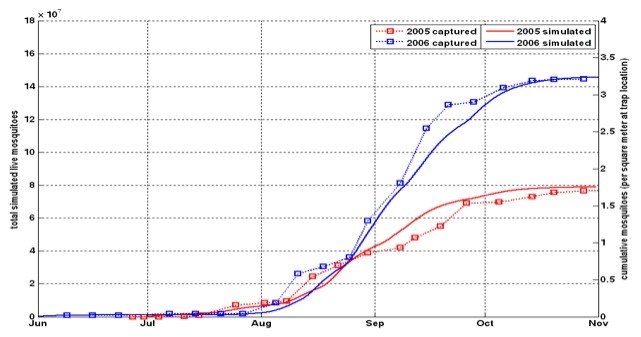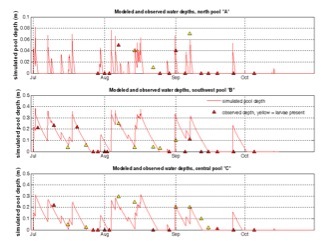













pool in Banizoumbou, Niger
Prediction of impacts of interannual climate variability on malaria transmissibility in Banizoumbou. Using our mechanistic modeling approach, we have reproduced the seasonal and interannual variability in mosquito abundance between 2005 and 2006. This result is from our agent-based model (HYREMAT)
coupled to a distributed hydrology model.
Locations and persistence of breeding pools are explicitly simulated at high spatial and temporal resolution. As shown in the figure 2, breeding pool locations are reproduced after simulation of precipitation runoff, and subsequent overland flow into topographic low points. The persistence of these
pools and controls of larvae within them is shown in Figure 3.
Assessment of environmental management techniques for malaria control. Due to its spatially explicit structure, the modeling framework allows a priori evaluation of various mosquito control scenarios involving pool alterations such as drainage, flattening or larviciding.


figure 2
figure 3
HYDREMAT output


